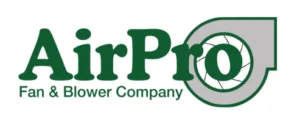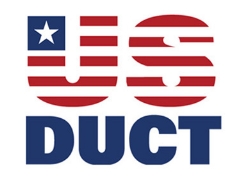
Ductwork Exhaust and Roof Penetration Components
A critical component to your complete ductwork system are the parts that come after the fan, at the point of exhaust. In fact, many of the most challenging solutions take place after the fan and prior to exhaust. Duct products at the end of the ducting system can adversely or positively affect fan performance, CFM rates, roof penetrations and environmental factors.
US Duct offers standard and custom fabrication for exhaust and roof penetration components that provide the optimal solution.
No-Loss Stackheads
No-loss Stacks Reduce Air Flow Resistance and Save Money!
More and more engineers are conscious of the need to conserve every aspect of energy. One historic ‘thief’ of a fan’s performance has been the back pressure created by the twist and turns of the exhaust from a fan. The ideal solution is to have a straight shot to the atmosphere. But this often was not possible because of the need to keep rain water out of the fan. The No Loss Stack solves that problem.
Stackheads Used to Exhaust Through the Roof
Constructed as a duct that is attached to and exhaust into a second duct that is 1″ larger in diameter, the larger duct allows the air to exhaust while allowing rain water to run down its inside walls and drop outside of the inner duct. Typically, the second duct has a length that is four times the diameter (4 x D) of the inner pipe. It is attached to the inner pipe with brackets and often has a flange on the top lip in order to ‘guy’ wire the entire unit to the roof.
We make sure all of your size and transition needs are taken care of when you order a no-loss stack for your system.
No-loss Stackheads Protect Exhaust Fans from Weather
No-loss stacks or no-loss stackheads as they’re sometimes called, eliminate the back pressure that causes increased fan resistance. Increased resistance causes the fan to use additional power to maintain the calculated cubic feet per minute (CFM) rate required for the system. To correct this, the central exhaust duct is surrounded by the larger duct of the no-loss stack, and extends up higher than the central duct and is open at the bottom. Rain water then falls into the upper part of the larger duct and drains down the side of the no-loss stack and discharges at the bottom. No-Loss stacks are most often ordered in galvanized and stainless steel.

Rain Caps
Preventing the intrusion of rain into the exhaust of your system will stop the negative effects of water on your system. Water can contribute to the corrosion of components, especially fan and electrical elements. A well-designed rain cap is one solution to this problem. As the name implies, the unit serves as a cap over the exhaust pipe. The cap is larger than the diameter of the pipe and affixed to the pipe and includes side vent panels or openings that allow for the flow of the air to the outside with minimal restrictions to exhaust airflow. Rain caps can cause some backflow pressure and are a good solution for those systems that can accommodate these restrictions.
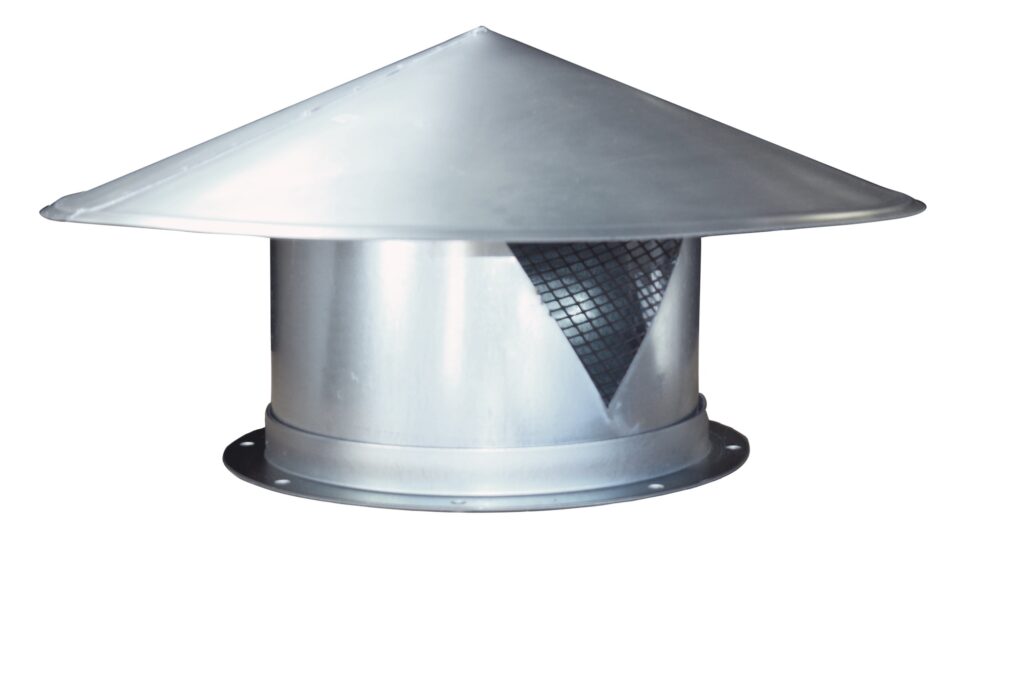
Flap Exhaust Valves
Flap Stacks
Another of US Duct’s resourceful “after the fan” products, flap exhaust valves, or stacks, are designed to open, like bird wings, with the airflow and close when the system is not exhausting. The lightweight and balanced blades produce minimal resistance to exhaust. The design of the housing and blades channel rainwater away from the opening and allow it to drain without intrusion into the ducting. The vertical profile of double flap exhaust stacks is shorter than non-loss stack heads so they require less vertical space
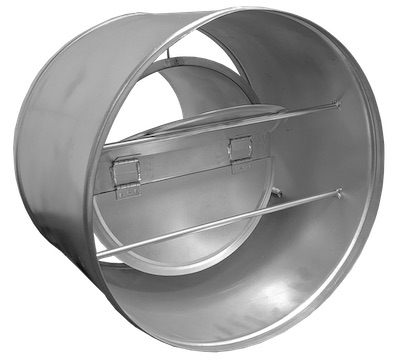
Fan Transitions
Every duct system requires transitions or special adaptations – transitions to the collector or that special machine that just won’t take a standard adapter. Therefore, it is not enough that you choose a supplier that can provide you with standard duct components. You must find an Industrial Duct Supplier that understands metal, how it works in the fabrication process, and how air flows in collection systems.
- Transitions from fan to the collector
- Custom designed or to your specifications
- Maximized for airflow – low resistance designs
- No matter the brand, we can build a transition for it
Fan Transitions
Dust Collection system design sometimes calls for a custom duct piece to connect the fan to the collector. US Duct can fabricate a precise transition to accommodate the design and/or brand of collector you are including with your system design.
- Any collector/fan brand
- Custom design or to your specifications
- Paint color matching options
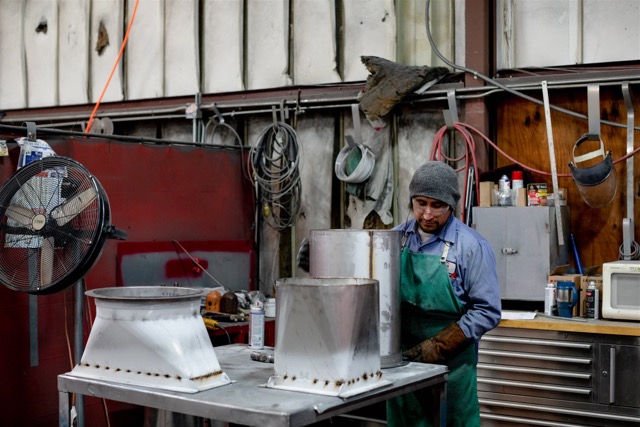
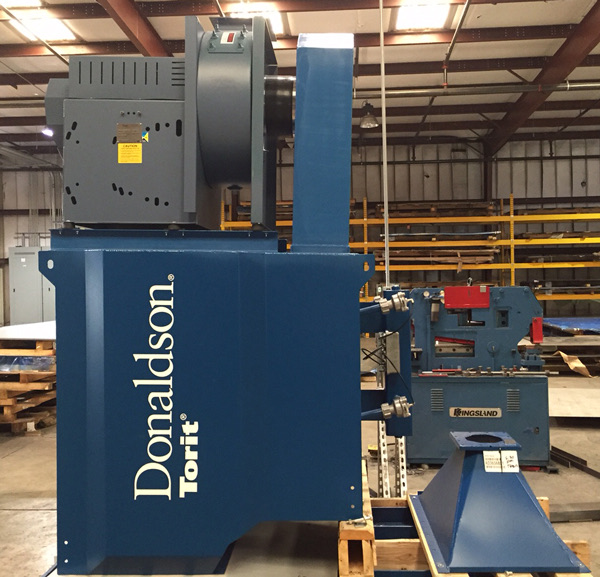
Silencers
Reducing Noise from Turbulence within Ductwork
Quiet is the audible side of ‘green’. More and more attention is being paid to the impact of noise- on neighbors and workers. Everyone who has ever worked around a noise producer only to have it suddenly cut off and then experienced the ‘quiet’, understands the impact of noise on production.
Exhaust from fans and/or dust collectors can be worrisome noise that bothers neighbors and ‘drains’ employees. US Duct’s silencers are designed and fabricated to provide the ultimate straightening of air, absorbance of noise and the desired ‘silencing’ of air.
Why Your Duct Exhaust Fans Are So Noisy
The noise from exhaust air is the result of turbulence in the air. There are many factors that impact this. The fan’s design and the design of the fan and system can create turbulence. A longer length of the duct exiting the fan can serve to ‘straighten’ out the fan just as a shorter length may not allow for straightening. Elbows and transitions (especially short or poorly designed transitions) can also cause turbulence. And while US Duct’s silencers are very effective at straightening the air and absorbing the noise, it is impossible to provide data that will apply to all situations as every situation is different. Under severe situations, a second silencer may need to be added to control and eliminate the noise/turbulence.

Standing Fume Arm
Clear the Air!
Quickly remove fumes from any sized space with our standing, articulated fume arm. The 360 Degree rotating arm is ideal for capturing fumes from welding and other fume-emitting processes. Maintain the safety of your workspace with this essential product.
Features
- Full 360 Degree Rotation
- Solid, metal construction
- Powder Coated for durability
- Wide flanged head
- Smooth articulation
Vibration Dampeners
Fans and other machinery can generate vibration that is conveyed through the ducting pipe. Vibration can increase damage to adjacent machinery, create unwanted ambient debris (dust) and excess noise. US Duct’s Vibration Dampeners are designed to reduce the transference of vibration. A vibration absorbent membrane is used between to ductwork connection ends. The dampener effectively absorbs vibration and prevents it from passing through to the other parts of the system.
- Gauges to match your needs from heavy to light
- The standard membrane is ⅛” EDPM
- Connection ends are available in rolled-lip, US Tubing, flange, and raw ends

A further word about exhaust components
Proper exhaust of your ducting system needs to address two primary factors: air-flow and rain water intrusion. When the exhaust from the fan exits the system, the best path is straight into the environment. Adding an elbow or bend to the top of your exhaust pipe can restrict air-flow and increase fan resistance – adding to fan operation costs and wear. Although a straight exhaust reduces that restriction, the open end will allow for rain water to enter the pipe and descend down the pipe to enter the fan, potentially damaging the electrical or other components. Adding a US Duct exhaust system of either a rain cap, no-loss stack, or double flap exhaust stack will minimize air-flow issues and prevent the intrusion of water into the system.
Important Information
Roof Penetration Accessories
- Roof curb skirts
- Roof curb flashings
Noise/Vibration Management
MEDIA & CASE STUDIES
US Duct’s Fume Arm

